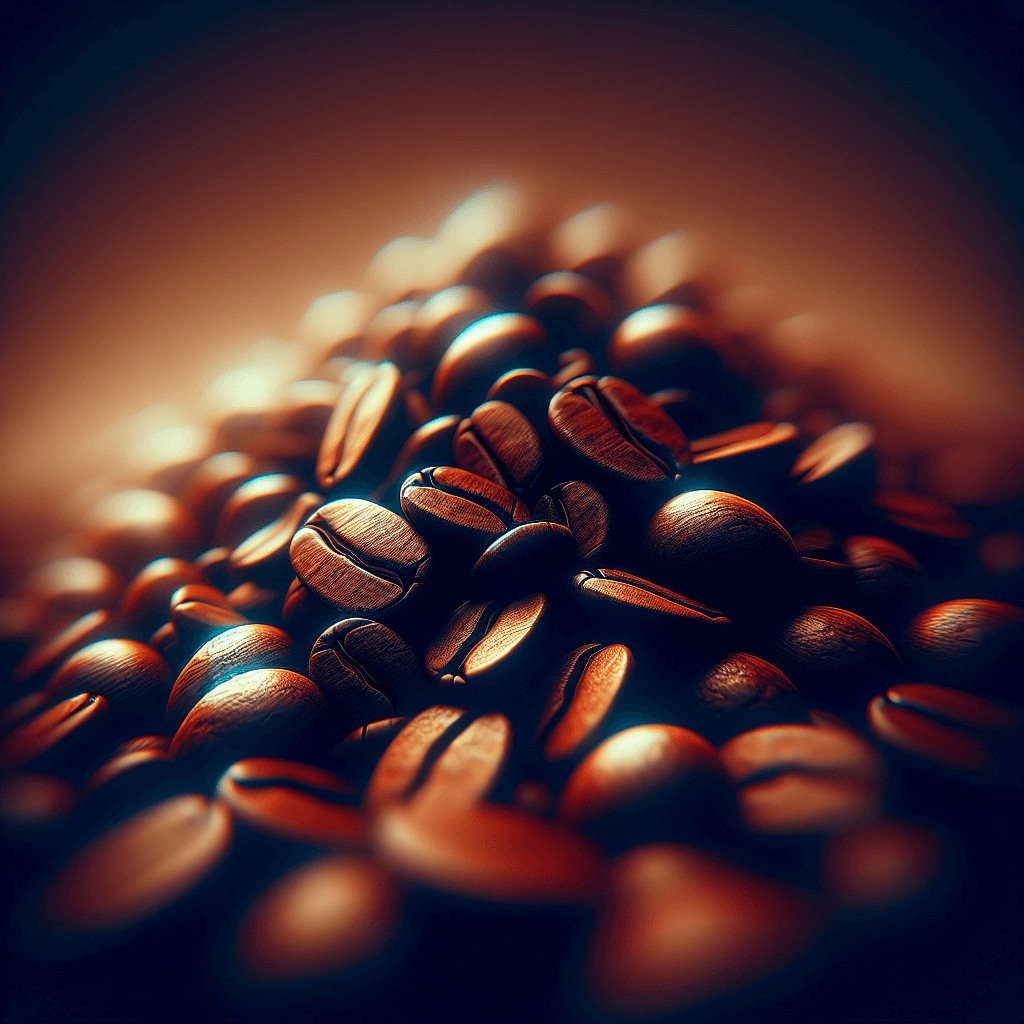Brewing Techniques
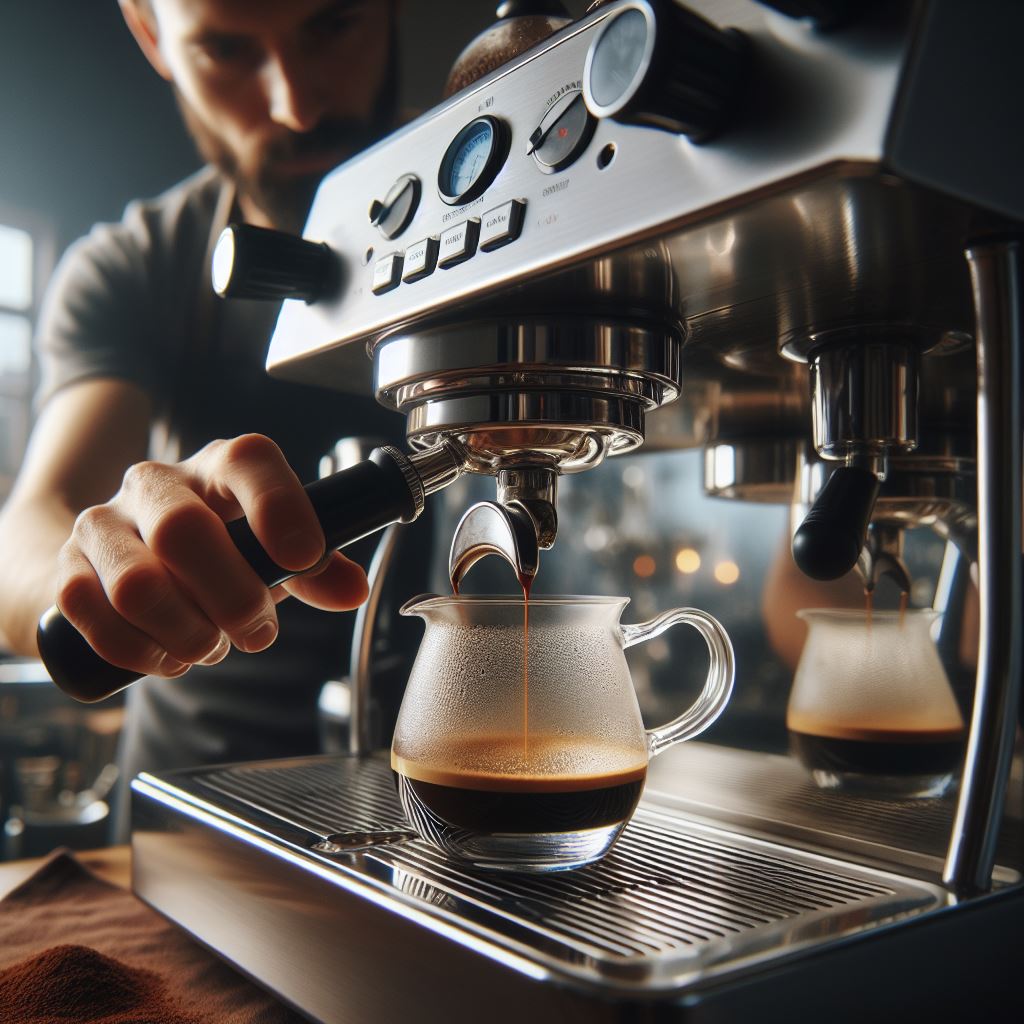
Espresso Extraction
Espresso is among the most esteemed methods of coffee preparation. It employs a high-pressure machine to propel hot water through finely-ground coffee, yielding a concentrated and robust shot topped with a distinctive crema. The optimal extraction time typically falls between 25 to 30 seconds, ensuring the preservation of rich flavors and aromatic profiles.
Espresso serves as the foundation for a variety of beloved beverages such as cappuccinos and lattes. Its swift preparation method retains the intricate layers of coffee flavors, making it an enticing pursuit for aficionados who appreciate strength and complexity in their brews.
The process begins with selecting premium coffee beans and grinding them to the perfect consistency, neither too fine nor too coarse. The coffee grounds are then tamped into the portafilter with just the right amount of pressure to ensure even extraction.
Next, the portafilter is locked into the espresso machine, and hot water is forced through the compacted coffee grounds at high pressure. This intense pressure extracts the coffee’s oils, flavors, and aromatic compounds, resulting in a small yet potent shot of espresso.
The hallmark of a well-pulled espresso is its rich crema, a creamy layer that forms on the surface of the shot. The crema not only adds visual appeal but also contributes to the overall flavor and mouthfeel of the espresso.
Pour-Over Method
The pour-over involves pouring hot water over ground coffee contained within a filter, allowing the water to gradually seep through the coffee and filter, and into a carafe or mug below. Popular devices for this method include the Chemex and the Hario V60, both renowned for their ability to facilitate even extraction.
Achieving a balanced flavor profile hinges on controlling the pour rate and ensuring uniform distribution of water over the coffee grounds.
A suitable filter is placed within the pour-over device, and finely-ground coffee is added to the filter. The water is heated to an optimal temperature, usually around 195°F to 205°F (90°C to 96°C), ensuring ideal extraction without scalding the coffee grounds.
Water is gradually poured over the coffee grounds in a circular motion, starting from the center and moving outward. It ensures that all the grounds are saturated evenly, promoting uniform extraction.
The rate of pouring is crucial, as a slow and steady stream allows for thorough saturation and extraction, while a rapid pour may result in uneven extraction and a subpar brew.
As the water filters through the grounds, it carries with it the coffee’s oils, flavors, and aromatic compounds, resulting in a flavorful and nuanced brew. The filtered coffee collects in the vessel below, ready to be savored and enjoyed.
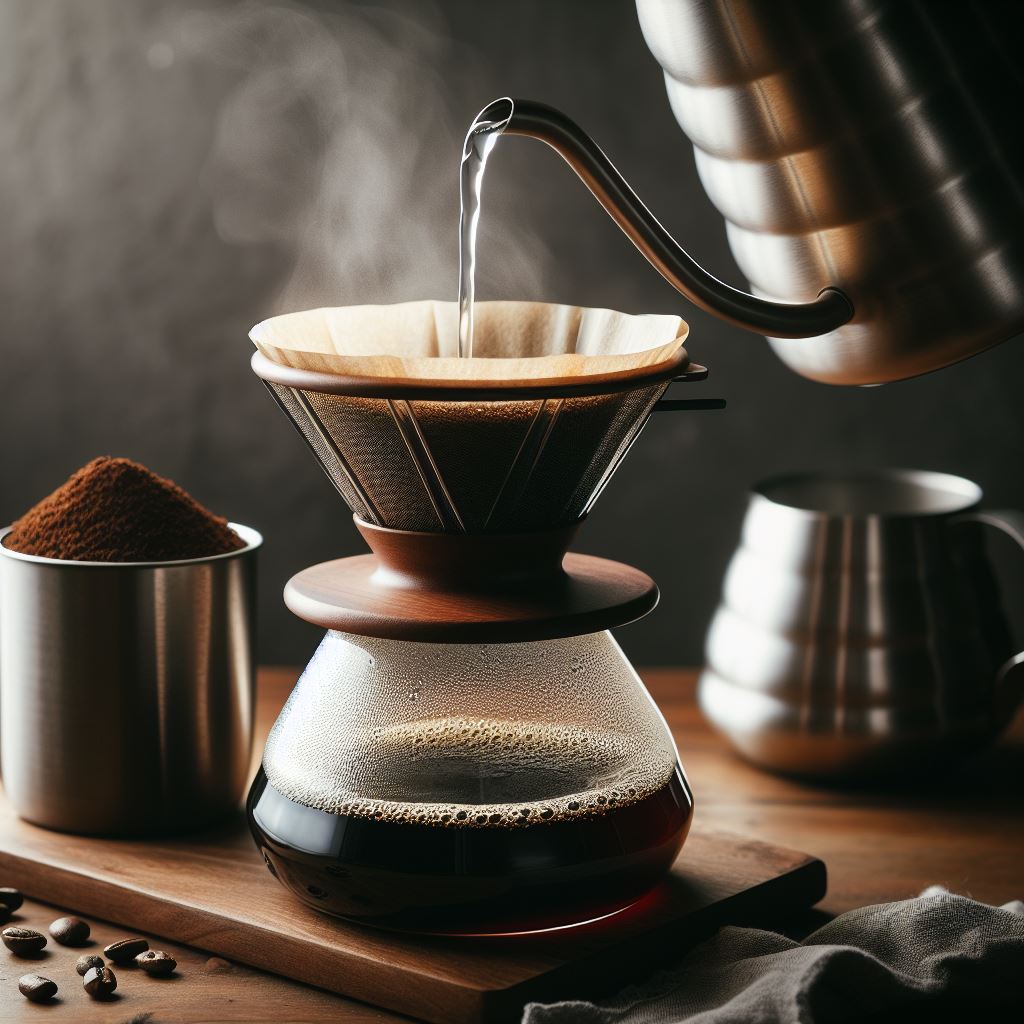
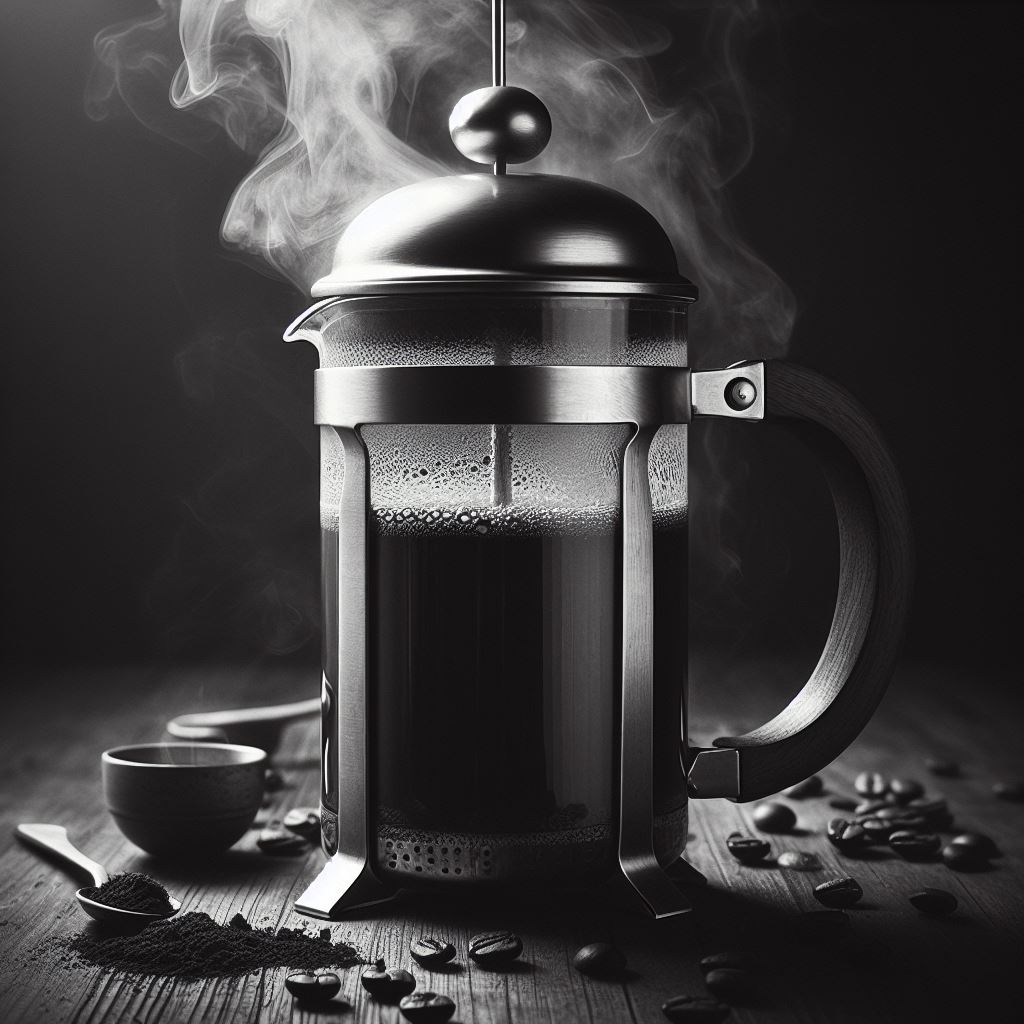
French Press
The French press, also known as a plunger, stands as another cherished method among coffee enthusiasts, celebrated for its simplicity and ability to produce a full-bodied brew.
What sets the French press apart is its direct immersion brewing method, wherein the coffee grounds are fully immersed in water throughout the steeping process. This immersion allows the coffee’s oils and fine particles to remain in the final brew, contributing to its dense and flavorful profile—a characteristic that filter-based methods often lack.
The coarsely ground coffee used in this method allows for a slower extraction process, enabling the coffee to develop its complex flavors over the steeping period.
The French press brewing process is relatively straightforward, making it accessible to both novice and seasoned coffee enthusiasts alike. After adding the coffee grounds to the French press, hot water is poured over them, and the mixture is left to steep for the desired duration.
Once the steeping time is complete, the plunger is slowly pressed down, separating the grounds from the brewed coffee. The result is a rich and aromatic brew that’s ready to be poured and enjoyed.
Cold Brew
For coffee aficionados seeking a refreshing alternative, the cold brew method offers a smooth and mellow experience. Unlike traditional brewing methods that use hot water, cold brew involves steeping coarsely ground coffee in cold water for an extended period, typically 12 to 24 hours. The slow extraction process produces a concentrate that is then diluted with water or milk before serving.
Cold brew enthusiasts appreciate its low acidity and gentle flavor profile, which highlights the natural sweetness and subtle notes of the coffee beans. The prolonged steeping time allows for a gradual extraction of flavor compounds without the bitterness that can result from hot brewing methods.
To prepare cold brew, coarse coffee grounds are combined with cold water in a container or pitcher. The mixture is then left to steep at room temperature or in the refrigerator for the desired duration. Once the steeping is complete, the coffee is strained to remove the grounds, leaving behind a smooth and flavorful concentrate.
Cold brew can be enjoyed over ice for a refreshing summer beverage or mixed with milk or cream for a creamy and indulgent treat. Its versatility makes it a popular choice among coffee lovers looking for a customizable and satisfying drink.
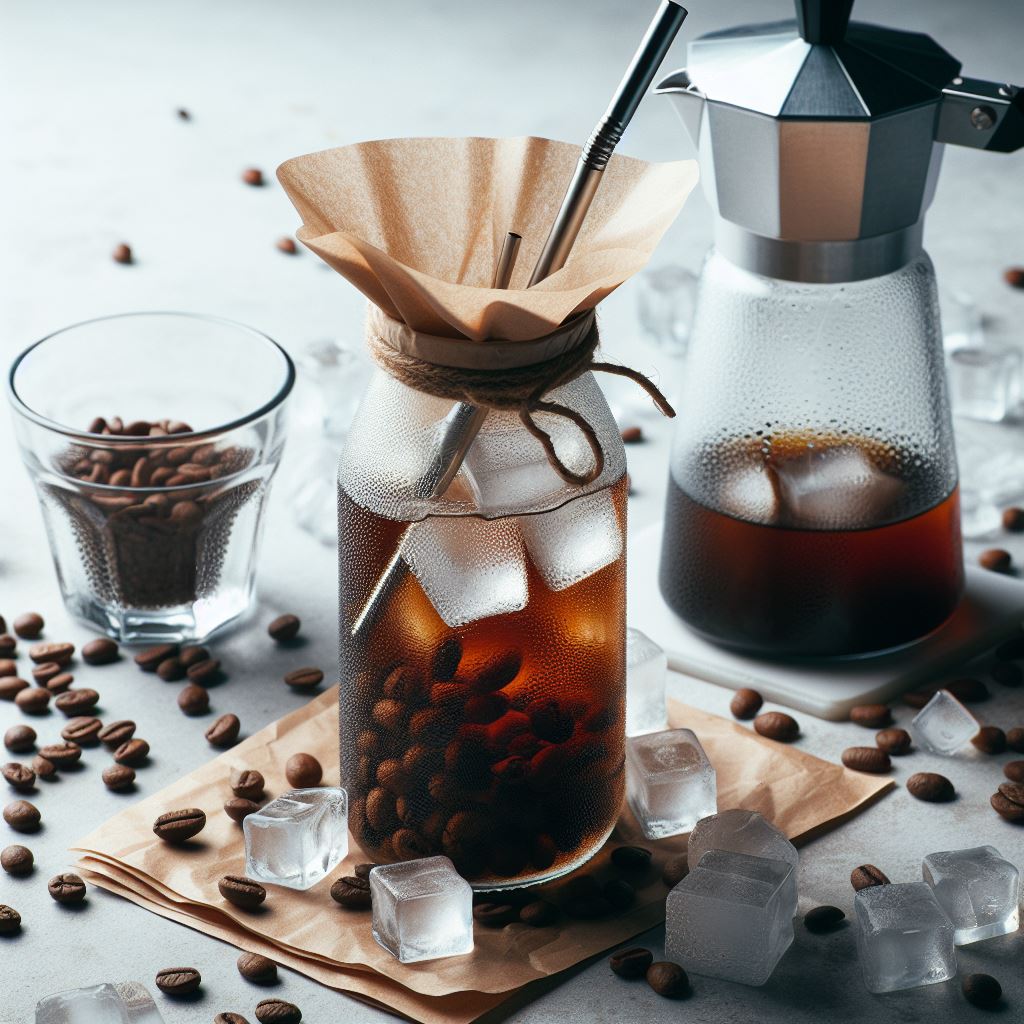
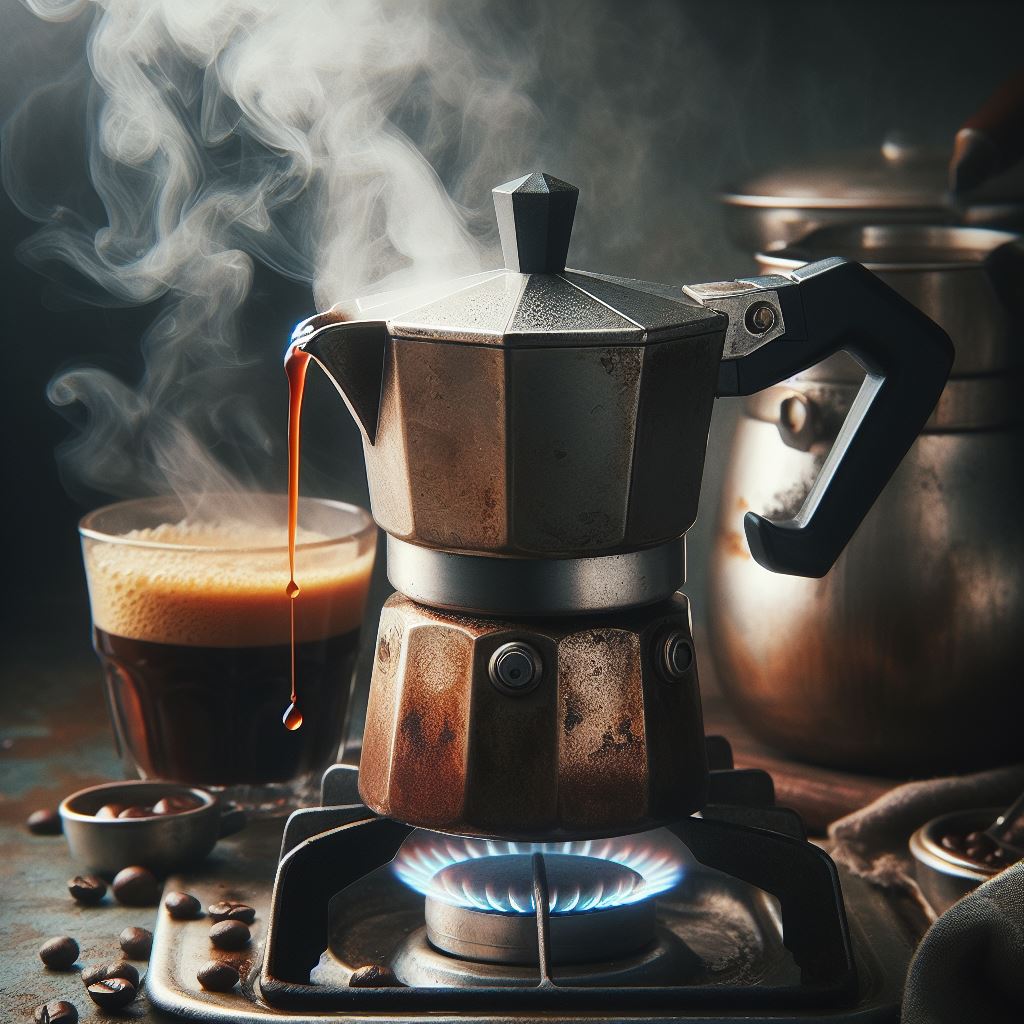
The Stovetop Espresso Maker
The stovetop espresso maker, commonly referred to as a Moka pot, holds a revered status as a classic option for brewing coffee at home, particularly in Italian households where it has been a fixture for decades. This device operates by passing boiling water, pressurized by steam, through finely-ground coffee, resulting in a brew that stands as a balance between espresso and drip coffee.
While the Moka pot doesn’t replicate true espresso in terms of pressure and the formation of crema, it does produce a coffee with comparable strength and body, making it a popular choice for coffee lovers seeking a bold and intense brew without the need for expensive espresso machines.
Achieving the perfect brew hinges on several factors, including selecting the right grind size for the coffee beans, ensuring the coffee grounds are not overpacked into the basket, and carefully monitoring the heat during the brewing process to prevent the development of burnt flavors.
To brew coffee with a Moka pot, water is added to the lower chamber, and finely-ground coffee is placed in the middle chamber’s filter basket. The Moka pot is then assembled and placed on the stovetop, where heat gradually builds up and creates steam pressure, forcing the water through the coffee grounds and into the upper chamber.
Siphon Brewer
The siphon brewer, also known as a vacuum pot, presents a captivating spectacle for coffee aficionados who appreciate the theatrical aspects of coffee brewing. This method employs vapor pressure and vacuum to create a unique and flavorful cup of coffee, combining both science and artistry in its process.
The siphon brewer consists of two chambers, each playing a crucial role in the brewing process. Water is heated in the lower chamber, creating vapor pressure that forces water into the upper chamber containing the coffee grounds. The coffee grounds steep in the hot water, extracting their flavors and aromas.
Once the brewing is complete, heat is removed from the lower chamber, causing the vapor pressure to decrease. As a result, the brewed coffee is drawn back down through a filter into the lower chamber, leaving behind the spent coffee grounds in the upper chamber.
One of the distinguishing features of the siphon brewer is its ability to produce coffee with exceptional purity of flavor and clarity in the cup. The precise control over brewing temperature and extraction time ensures that the inherent qualities of the coffee beans are fully showcased.
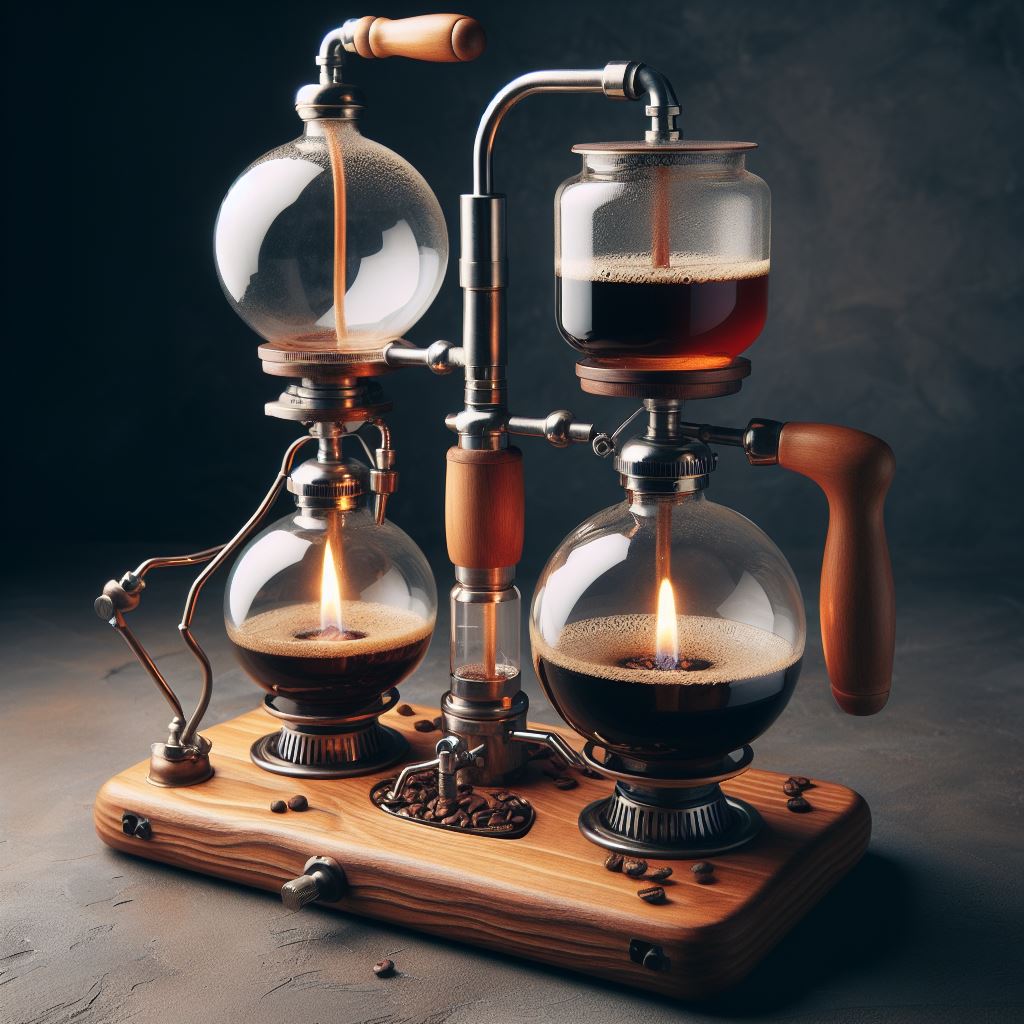
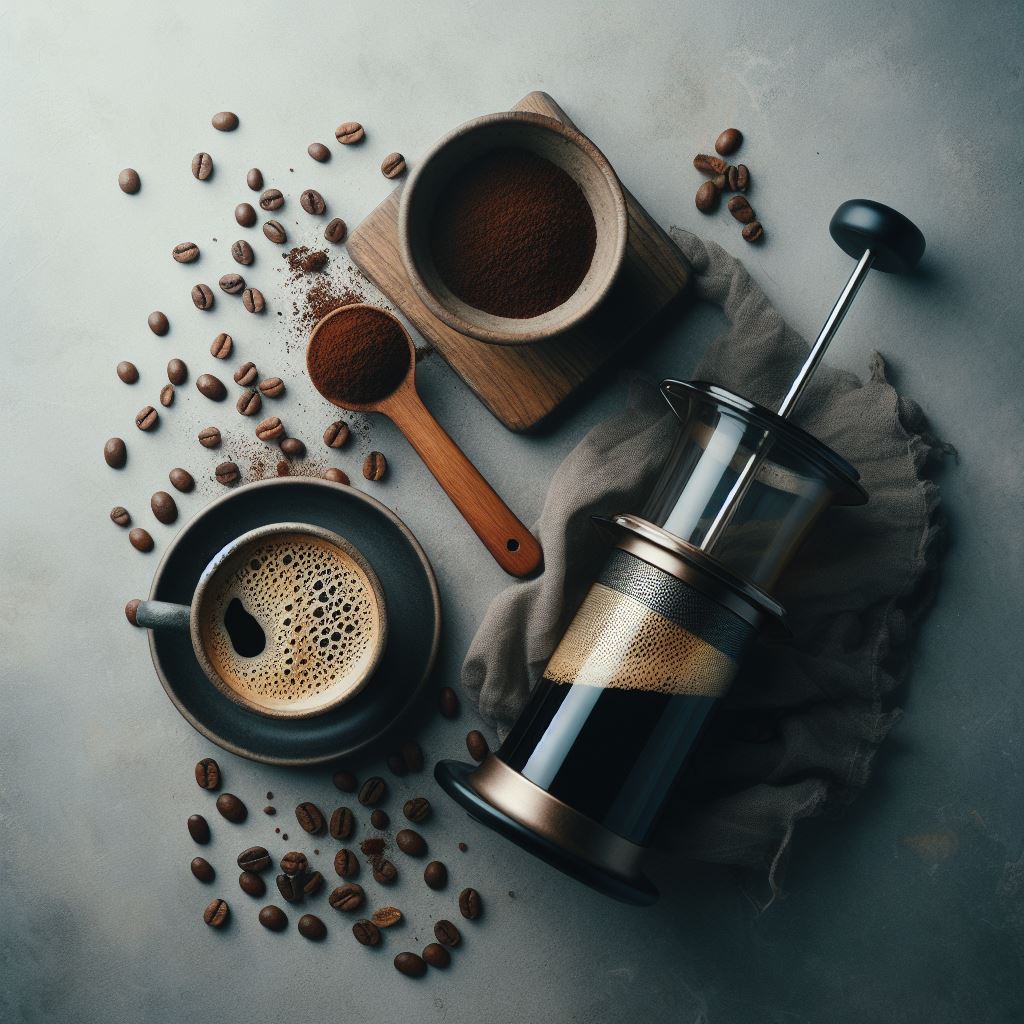
AeroPress Method
The AeroPress stands out as a versatile brewing device capable of crafting a variety of coffee styles, making it a favorite among coffee enthusiasts seeking flexibility. This compact device employs a rapid, total immersion brewing process to extract rich flavors from coffee grounds.
The AeroPress consists of a plastic tube where fine or medium-fine coffee grounds are mixed with water. After a brief steeping period, the coffee-water mixture is pressed through a filter using a plunger, resulting in a flavorful brew with minimal bitterness and acidity.
The AeroPress method is relatively simple and efficient. To begin, coffee grounds are placed in the AeroPress chamber, followed by hot water. After stirring the mixture, the plunger is inserted and pressed down gently, forcing the brewed coffee through the filter and into a cup below.
The rapid brewing process of the AeroPress ensures that flavors are extracted quickly without over-extraction, resulting in a balanced and flavorful cup of coffee. Additionally, its compact size and portability make it an ideal brewing option for travelers, campers, and coffee enthusiasts on the go.

